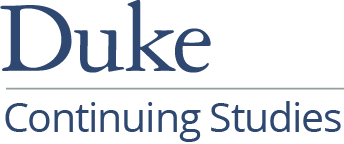Reframing Your Project: A Modern Leadership Guide
Organizations today are dynamic ecosystems, and their complexities can significantly impact the success of a project. In this ever-evolving environment, projects serve as the driving force for organizational change. While having a solid project management framework is crucial, true transformation requires more than just processes—it demands leadership.
In order to navigate these complexities and ensure a project delivers value, both project managers and sponsors need essential leadership skills to:
- Secure project approval
- Allocate scarce resources
- Remove obstacles
- Balance competing stakeholder interests
- Motivate cross-functional teams
- Influence across silos
- Drive meaningful change
Achieving these results requires more than technical know-how. It demands the ability to interpret situations from multiple perspectives and adapt leadership approaches accordingly. Drawing from the classic leadership framework presented in Reframing Organizations by Lee Bolman and Terrence Deal, leaders can adopt four key lenses to reframe how they approach both projects and organizations.
1. The Structural Lens: Aligning Roles and Processes
 The structural lens emphasizes organization, roles, responsibilities, and processes. When a company undergoes significant changes—such as adopting agile practices—it’s essential to rethink the project’s structure to avoid silos and ensure clear communication, even when the news isn’t favorable.
The structural lens emphasizes organization, roles, responsibilities, and processes. When a company undergoes significant changes—such as adopting agile practices—it’s essential to rethink the project’s structure to avoid silos and ensure clear communication, even when the news isn’t favorable.
Leaders using the structural lens must consider how the organization’s hierarchy impacts their authority. In a top-down structure, the flow of decisions may differ from that of a more matrixed organization. Either way, it’s essential to ensure that everyone on the team understands their roles, responsibilities, and how decisions are made. A well-defined project governance system, with transparent review points, keeps things on track.
2. The Human Resource Lens: Balancing People and Performance
At the heart of any project are the people driving it. The human resource lens focuses on managing the work environment, motivating individuals, and supporting teams. Effective project leaders know how to balance results while preventing burnout. They create a culture where people can learn new skills, take on career-advancing responsibilities, and embrace change.
Change is inevitable in projects, and leaders must excel at communicating why it’s happening and how it will affect team members. Fostering an environment that supports both individual development and team cohesion is critical to achieving lasting project success.
3. The Political Lens: Navigating Power and Conflict
 Every project leader faces the challenge of navigating organizational politics. The political lens emphasizes the power dynamics, competing interests, and negotiation tactics necessary for securing resources and support. Effective leaders build strong coalitions and maintain open lines of communication to advocate for their projects.
Every project leader faces the challenge of navigating organizational politics. The political lens emphasizes the power dynamics, competing interests, and negotiation tactics necessary for securing resources and support. Effective leaders build strong coalitions and maintain open lines of communication to advocate for their projects.
Managing stakeholder expectations is key in the political landscape. Not everyone will get exactly what they want, but the project leader’s job is to ensure that the most critical needs are met. A politically savvy leader knows how to influence decision-makers and gain the trust of those who may not report directly to them but play a crucial role in the project's success.
4. The Symbolic Lens: Crafting a Compelling Story
The symbolic lens is all about culture, values, rituals, and storytelling. Leaders using this approach know how to inspire teams by turning the project’s objectives into a compelling narrative. Kickoff meetings, for example, become more than just task assignments—they set the tone for the entire project, emphasizing its urgency and potential benefits.
Throughout the project, symbolic leaders continually remind the team of their shared goals and celebrate milestones to maintain motivation. At the project’s conclusion, rituals like celebrations and “lessons learned” meetings create a lasting sense of accomplishment and build a repository of knowledge that future teams can draw upon.
Navigating Organizational Complexities with Multi-Frame Awareness
To lead successful projects in today’s complex organizations, project managers and sponsors must combine procedural expertise with strategic leadership. Understanding when to use each lens—structural, human resource, political, and symbolic—enables leaders to remove roadblocks, motivate teams, and capitalize on opportunities.
By embracing this multi-frame awareness, leaders can drive change, influence across silos, and ensure their projects deliver real value.
For a comprehensive list of our career-advancing Project Management courses or more information on corporate training, visit our website or contact us at 1.800.288.7246.
References: Bolman, L. & Deal, T. (2013). Reframing Organizations. San Francisco, CA: Jolley-Bass



- ©2025 Corporate Education Group, operated by CEG Operating Company, LLC. All Rights Reserved.
Privacy Policy | Terms and Conditions - PMI®, PMP®, CAPM®, PgMP®, PMBOK®; and the PMI®; Registered Education Provider logo are registered trademarks of the Project Management Institute, Inc. CBAP® and IIBA® are registered trademarks of International Institute of Business Analysis. All other trademarks mentioned on this site are property of their respective owners. All rights reserved. CEG is an approved Authorized Partner within the Blanchard Authorized Partner Program and is licensed to market, sell, and train SLII®.



